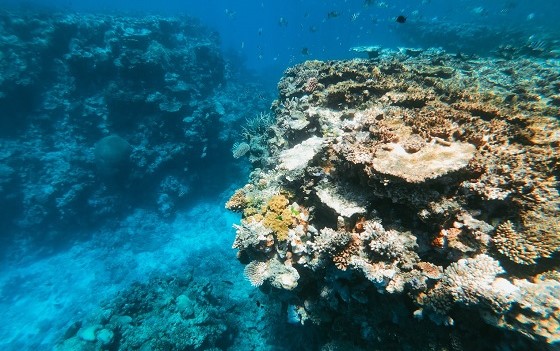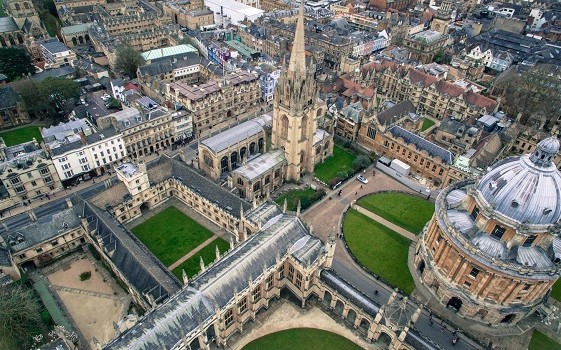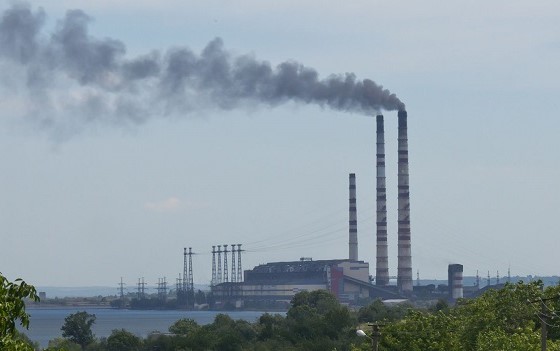Academic year 2018/19
Cathy Dong (2018)

The Dead Zone-- Gulf of Mexico Policy Brief: Improving the nitrogen pollution in the Gulf of Mexico Through Better Regulation System
Targeted at: the Administrator of the Environmental Protection Agency, Andrew R. Wheeler
Executive Summary
The Gulf of Mexico is the river mouth of Mississippi-Atchafalaya River Basin. Huge amount of nitrogen and phosphorous are inflowing into the gulf every year. Nutrients primarily come from the N and P in the fertilizer which used in the agriculture for food and biofuel; artificial drainage, waste generated from human and livestock are also the source of nutrient. As the nutrients load increase, the production of organism such as algal increase which reduce the oxygen level leading to hypoxia or dead zone. The over enrichment of seawater is a serious environmental concern that put a huge threat on marine animal and largely driven up the seafood price. The research shown that the dead zone would cause approximately a $82 million loss on seafood and tourism industry. Alongside the amount of nutrients discharged, season change can also vary the size of the hypoxia.
In 1997, HTF established to reduce the nutrient flow as well as the size of hypoxia. In 2001, the first action plan (2001 action plan) was launched to develop the conversation programs of monitoring and research. It aimed to reduce the hypoxic area to less than 5000 km^2 by 2015. However, the plan was not fully successful. In 2008, the second plan initiated (2008 action plan). Based on uncompleted plans left from 2001, the 2008 action plan included better funding strategies, improved tracking, adapt to new scientific findings (EPA,2008, p19). In 2015, HTF announced an extension of the time of achieving the goal from 2015 to 2035.
This report recommend a number of policies to reduce the non-point pollution, this can be concluded in 3 aspects: mandatory, monetary as well as voluntary, these include introducing the law to force people to use less fertilizer, setting the nitrogen credit to control the amount of nutrient inflow; the monopoly power of fertilizer supply controlled by the government within the country; the shift of people’s diet.
Joe Gosney (2019)

Targeted Conservation - Maximising the Great Barrier Reef’s resilience to human-induced threats
Targeted at: the Australian and Queensland Governments
Executive Summary
The Great Barrier Reef (GBR) is suffering from significant biodiversity loss which threatens not only the reef itself, but also the continued prosperity of the Australian people. The GBR is currently protected by the GBR Marine Park Authority, however the current conservation strategies being implemented within the GBR Marine Park are inadequate. The Australian and Queensland Governments must re-establish the emphasis on conservation within the GBR, with a focus on protecting species that are crucial to the reef’s ecosystem. In addition, the number and size of marine protected areas within the GBR Marine Park must be increased alongside improved management of terrestrial pollutants.
Marlene Jacobsen (2019)

Deforestation in Indonesia –
why the Roundtable on Sustainable Palm Oil
needs to redefine its certification
Targeted at: the “No Deforestation Joint Steering Group” within the Roundtable on Sustainable Palm Oil
Executive Summary
Deforestation is a threat to our ecosystems; especially in Indonesia, the country with the highest deforestation rate worldwide. Indonesia’s palm oil industry is expanding, and accounts for half of its forest loss since 2000. The conversion of tropical forests to oil palm monocultures has severe environmental consequences. It results in habitat loss and species endangerment, and therefore reduces biodiversity. Additionally, deforestation releases large amounts of carbon stored in vegetation into the atmosphere. The Roundtable on Sustainable Palm Oil (RSPO) aims to minimize these negative impacts through certifying producers that fulfil certain environmental and social criteria. For instance, it declares to give special protection to High Conservation Value (HCV) forests. However, the effects certification has on deforestation rates is disputable. Indeed, about 40% of the area located in RSPO concessions still suffered from forest loss between 2001 and 2016. And certified producers tend to be those who hold plantations with little remaining forest and who were already close to comply the RSPO standard. Hence, the RSPO should revise its criteria and make their implementation effective, using a monitoring and incentivising system. Furthermore, small-scale producers should be more integrated into certification, and the RSPO can orient towards the similar, but more holistic approach of the Palm Oil Innovation Group.
Doaa Khalil (2019)

Fresh Water and Developing Countries: Regulated international trade practices and collaborative reflective policies needed to ensure sustainable development
Targeted at: The United Nations Environmental programme (UN Environment)
Executive Summary
Global fresh water has become a scarce source as a result of how humanity has managed it – making it one of the planetary boundaries. It is important to acknowledge the consequences of human’s actions on specifically the Agricultural sector as it’s a vital component to developing countries’ economic growth. Human’s activities in agriculture has led to the decline of water needed to maintain ecosystem’s functions. This is detrimental in terms of the water-stress that can occur which can lead to internal conflict that can also hinder the development of countries. It is imperative to investigate the issue of water scarcity more thoroughly as it is interlinked with other planetary boundaries such as Biodiversity loss which harms earth’s ecosystems and thus human beings. This is particularly harmful to developing countries since they do not have the technologies that developed countries have to withstand such issues. However, these technologies can also be harmful to the environment and growth of developing countries thus should not be perceived as an appropriate method of tackling the issue. Developed countries also contribute to the hinderance of the development of developing countries through the international trade of ‘virtual-water’ to which uneven power can be prevalent. This prevents developing countries to exploit their full potential as they carry the costs after transaction. Consequently, policies need to be made to preserve natural ecosystems through protection and restoration to which can be funded by ensuring just ‘virtual water’ trade practices are practiced. However, additionally there is the need to take a collaborative approach with different fields of expertise as water scarcity can be influenced by many other seemingly unrelated policies. Consequently, this would ensure a more cohesive approach tackling the issue at every angle.
Hannah Micuta (2019)

An Imminent Threat: A Call To Strengthen And Restructure Climate Change Governance In Bangkok
Targeted at: the Governor of Bangkok, Aswin Kwanmuang
Executive Summary
There remains only 11 years to mitigate against the climatic changes which severely threaten environmental security, sustainable governance and socio-economic development in Bangkok. Hence, the Bangkok Metropolitan Administration should ensure that strong local-scale mitigation strategies are formulated and executed. Despite current targets inciting action, failures to outline the connections between local targets and global thresholds limit their success. Ambitions are further constrained by a lack of inter-agency co-ordination within municipal governance, as well as the Bangkok Metropolitan Administration’s overall focus on improving car mobility. In order to mitigate climate change to the greatest effect, policies should be framed within the context of adhering to global targets and biophysical thresholds. As demonstrated in the case study of Rizhao, horizontal integration should also be undertaken between agencies and stakeholders since it can facilitate more efficient governance. Furthermore, the Bangkok Metropolitan Administration must shift investments towards improving public transport accessibility, creating car-free zones and imposing parking restrictions, so that prospects of sustainable development can be secured within Bangkok.
Amhar Nayab (2019)

Creating protected areas to tackle the ever-increasing deforestation of the
Philippines mangrove forests
Targeted at: the central government of the Philippines
Executive Summary
Mangrove forests are becoming increasingly threatened, and with their vast stocks of blue carbon and provision of significant ecosystem services, regional impacts on mangroves can have global bearings. The Philippines is dealing with this issue first-hand, with 50% of their mangroves having been deforested, as they are exploited for their economic advantage, through activities such as logging and commercial fishing. This is not only having detrimental impacts on the local ecosystem biodiversity, but there is a growing concern that the 104 tonnes of carbon stored in the Philippines mangroves could be slowly released into the atmosphere, turning the country’s mangroves from a vital carbon sink to a carbon source in the years to come, which will have global implications. Government-led attempts to stop deforestation have proved unsuccessful, while initiatives to reduce impacts of deforestation have been limited due to pond contracts. This has contributed to reforested mangroves having survival rates of 10% - 20%, as desired species and sites cannot be effectively selected. The Filipino government has also failed to prevent their mangrove forests from being subject to exploitation, due to the common good nature of mangroves, where land is not bound to contracts. To overcome this issue, the creation of protected areas (PAs) with heightened monitoring and regulation is recommended, following the success of Indonesia, where PAs reduced mangrove loss by 28%. The government is encouraged to consider the long term economic and social benefits of mangroves in all levels of policy making and to introduce taxes on activities affecting mangroves, in an attempt to reduce deforestation.
Ella Ronan (2019)

Restoring Biodiversity in Coffee Plantations:
A New Global Deal Promoting Shade Coffee
Targeted at: the UN convention of biological diversity
Executive Summary
A need to protect biodiversity is higher now than ever before, evidence suggests we have already majorly surpassed the planetary boundary or safe operating space, and there is no sign of biodiversity loss slowing down. This is particularly worrying because a loss in biodiversity make the planet’s ecosystem more vulnerable to other changes, and this will lead to non-linear change, negatively affecting ecosystem services which humans rely on to survive, develop and thrive. Rainforests are vital habitats that host a vast array of biodiversity and are essential to providing many livelihoods of the indigenous population. Coffee is primarily grown in these areas and research has shown that the type of shade management used on plantations has a significant effect on biodiversity, which we know is crucial to protect. Existing governance used to promote shade coffee is limited and relies on ethical producers and consumers to buy in. Although there is growth in shade coffee, it is nowhere near fast enough to protect the biodiversity we currently have in the rainforest. A global deal should be created to secure the future of our biodiversity and ensure that farmers are still able to make a living; this would include richer countries paying in, so poorer countries which are specifically located where coffee is grown, can fund farmers in the creation of shade coffee plantations, in the name of protecting biodiversity and the agroecosystem’s sustainability as a whole. This would include increasing vegetation diversity on coffee plantations, maintenance of natural forest within close proximity of coffee plantations, and increased education of both producers and consumers on the effects unsustainable practices have on biodiversity.
Sasha Trapani (2019)

Fresh Water Supply and Availability:
Monitoring a developing crisis in Ghana
Targeted at: the Ghana Urban Water Company and Water Resource Commission
Executive Summary
In spite of the known abundance of fresh water that is accessible in Ghana, the production and utilisation of this resource, for both domestic and industrial means, is far below the optimum level (Owusu-Agyemang, 2007). Within the country there are still areas that experience inadequate supplies of fresh or sanitary water, especially due to the increased pollution of the sources and irregular weather patterns that promote severe drought and flooding. Specifically in Ghana, fresh (potable) water plays a large role, not only in the survival of its population but also in many industrial activities, including; hydropower generation, agricultural use, transport and mining. Continuous inadequate access to a sanitary, sufficient supply of potable water and a necessary volume for agricultural, domestic and industrial use is an ever-evolving crisis in the country. With a rapidly growing population, increasingly developing oil and gas industry, urbanisation of rural areas and irregular rainfall patterns due to climate change, this problem is heightened in this area of Western Africa. It is the aim of this brief to call for actions that can be taken immediately at both community and regional levels, as well as a number of initiatives that will help Ghana increase its levels of potable water available to its population and industry, aided by the appropriate national agencies. Within this brief, I will suggest ways to improve the access and sufficient use of potable water in the country. These policies include, long term monitoring of large bodies of water within specific regions using tried and tested technology, appropriate allocation of representatives on sanitary committees and the end of small-scale gold mining activities along the banks of estuaries and rivers that rapidly increase the pollution of these water sources.



